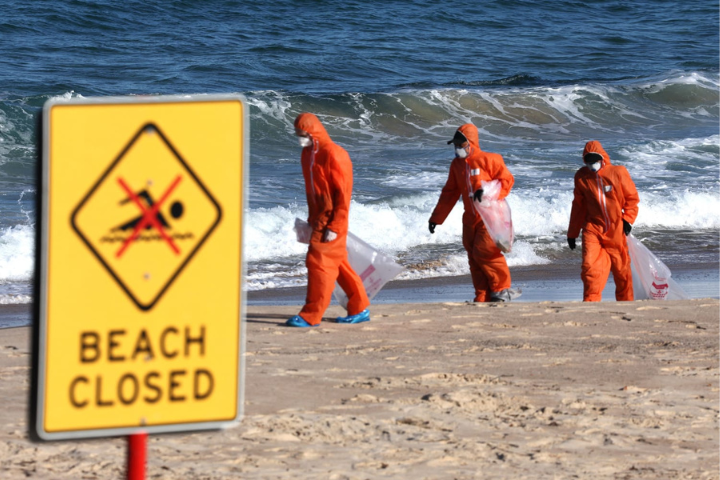Sydney, Australia—In mid-October, beachgoers and lifeguards were puzzled by black debris, ranging from the size of peas to tennis balls. Washing up on Sydney’s famous shores.
Initially, authorities assumed these sticky balls were tar balls, a common type of marine pollution formed when oil meets water and debris. However, a closer examination by the New South Wales Environment Protection Authority (EPA) revealed a much different and unexpected source.
Decomposed Waste, Not Tar Balls
Further analysis confirmed the debris was not oil-based but consisted of decomposed cooking oils, hair, and food waste. According to the EPA, this waste likely came from a mixed source, potentially indicating a complex disposal or pollution incident.
“Authorities have considered several possible causes, such as a shipping spill or wastewater outflow,” said the EPA, adding that pinpointing the exact origin is challenging due to the unique composition of the waste and its time in the ocean.
“Much More Disgusting” Than Expected
The research team at the University of New South Wales in Sydney led by Professor William Alexander Donald, was startled by the unpleasant findings. “What we found is much more — this is not going to sound very scientific — but much more disgusting than we previously thought,” Donald shared.
He explained that, alongside oils and grease, the balls contained traces of recreational drugs, soaps, and even birth control medication. Donald further added, “These balls smell worse than anything you’ve ever smelled before.”
Thousands of black debris balls were discovered on multiple Sydney beaches, including Bondi Beach, leading to temporary beach closures.
Public health officials advised people not to swim near the debris until further analysis was complete, hoping to protect public safety as they awaited conclusive test results.
Tracing the Source and Preventing Future Incidents
While the exact source remains uncertain, Sydney Water reported no issues at Bondi or Malabar water facilities. Transport for NSW Maritime examined recent weather and ocean patterns but did not find clear answers.
Donald noted that his team has received unconfirmed reports of similar waste incidents in southeastern Victoria, which may indicate a recurring issue.
The EPA aims to confirm the waste source in the coming weeks. Environmental experts believe these findings could lead to better waste monitoring and control measures, helping prevent similar incidents in the future.
As beachgoers hope for clear waters again, Sydney authorities continue investigating this unique case, reminding the public of the growing importance of environmental vigilance.




GIPHY App Key not set. Please check settings